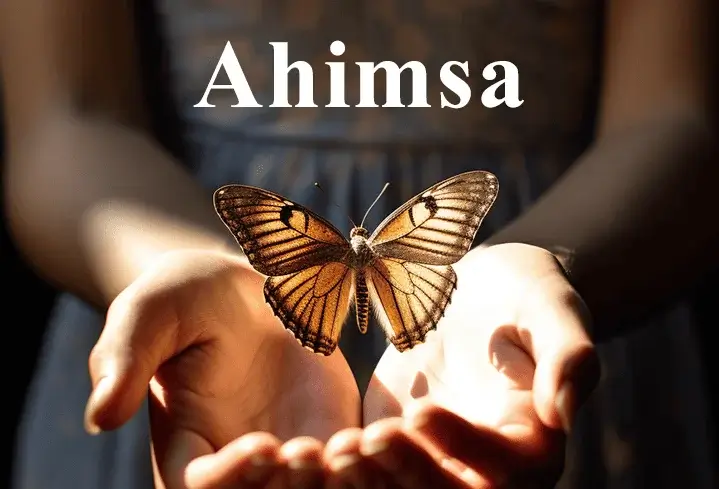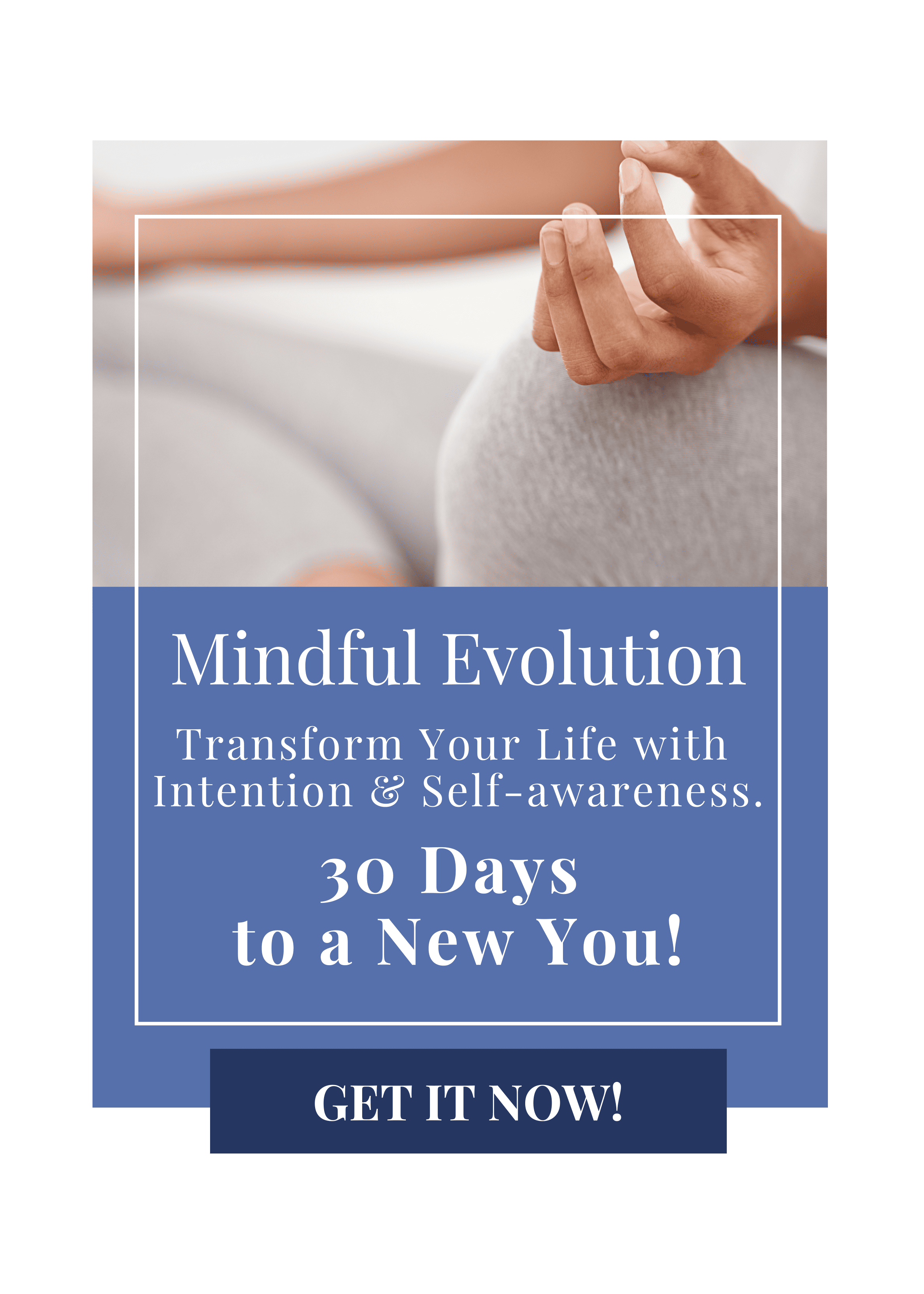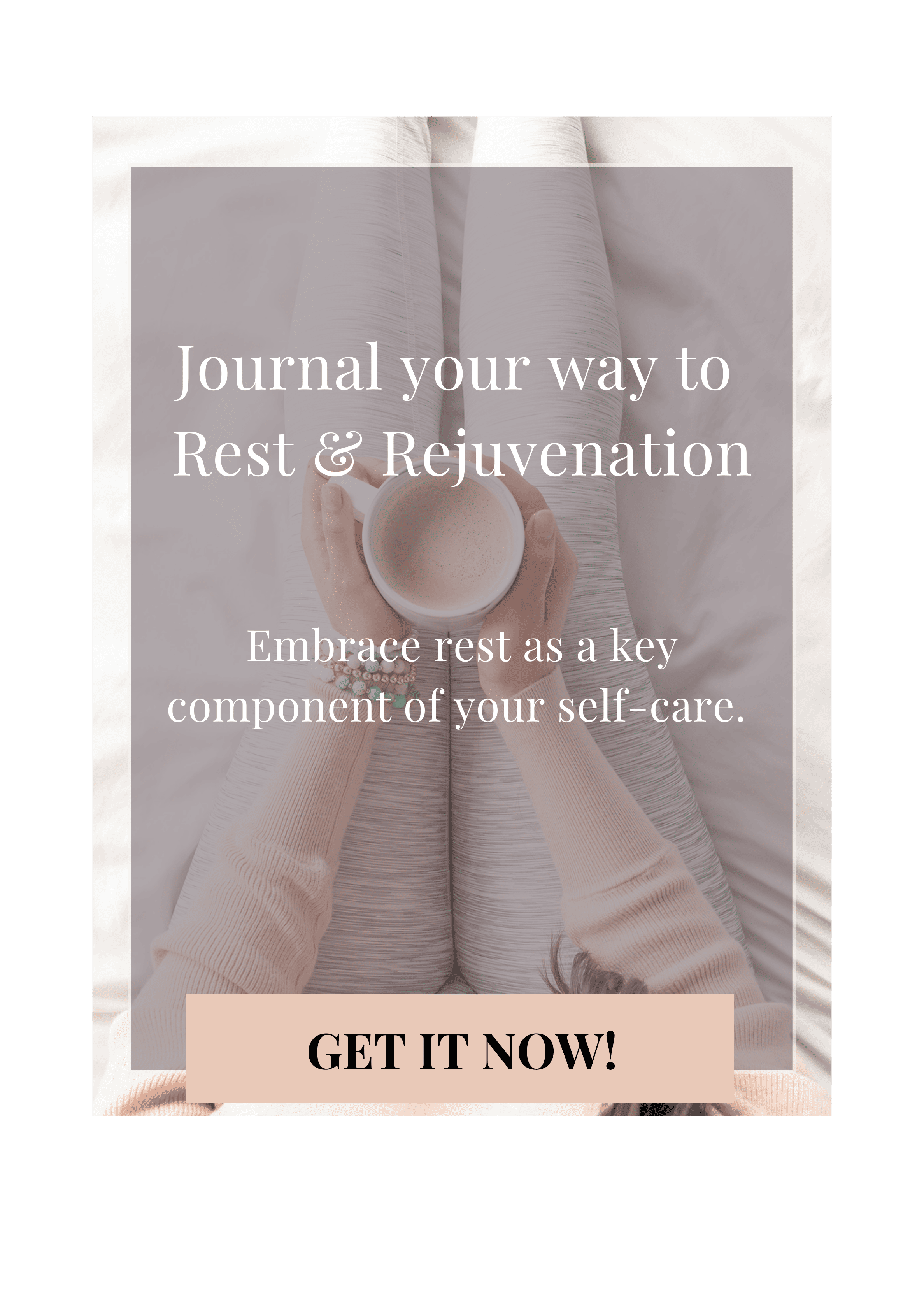This article includes a short introduction to the concept of Ahimsa + journal prompts + practical and easy ways to incorporate the concept into your life.
NOTE If you just landed on this article be sure to read the first article in this series first:
“What can an ancient text called the Yoga Sutra do for you?”
YAMAS – The external ethical rules
(Yoga Sutra II.30)
Yamas is the first limb in the 8 limbs of Astanga Yoga. Yamas means restraint = as in holding back, or trying to stop doing.
The Yamas consist of a list of 5 ethical principles for your relationships with others, the outside world, and nature. They are, in their most basic form, a form of basic life principles and focus on the kind of behavior you should try to live by. By living these principles, you neither inflict suffering on yourself nor others around you.
The 5 principles are; non-violence (ahimsa), truth (satya), non-stealing (asteya), restraint (brahmacharya), and non-attachment (aparigraha). They are the moral, ethical, and spiritual guidelines that are important to observe if you want to achieve a balance in life and health and well-being; physically as well as mentally.
The five principles can all be easily observed in your daily actions, words, and thoughts. By trying to live by them or, in the first place, just becoming aware of them, you are helping to form the foundation for a healthier and happier self as well as contributing to a healthier and happier world.

Ahimsa – non-violence, the first Yamas
(Yoga Sutra II 35)
The first Yamas is non-violence, which basically translates to “do no harm”. This Yamas is the first for a reason. It is the underlying Yamas of all other Yamas. (that was fun to write😊) This is the practice that has been at the core of many great leaders like eg.; Gandhi and Martin Luther King. And Patanjali would not have asked us to be non-violent if violence was not a present capacity in us. Therefore, it is important that we point the finger at ourselves and identify where it might be that we practice violence in everyday life.
This limb requires you to show full compassion towards all living beings, including yourself. It simply means that you should not harm yourself or any other living being. The yogic principle that everything is connected applies here. When you realize that all is connected, hurting someone or something else is the same as hurting yourself, and vice versa, and once you realize and accept this, you can begin to understand the true meaning of Ahimsa.
Now violence can take on many faces, some of which are quite brutal but can often pass for something else. So, you need to be intelligent when working with Ahimsa. You already know deep down how to avoid harming others and yourself right? Are you rude or arrogant? Would you unabashedly attack someone in word, mind, or thought? Would you comment anonymously online with negativity and hate? Or are you training and abusing your body beyond the limits of what is good for it?
But Ahimsa covers every aspect of practicing non-violence in the broadest term; towards yourself, others, and the earth itself, in your word, mind, thought, behavior, and action. So, there is a lot to work with here.
Practical steps when working with Ahimsa.
Applying Ahimsa to the practice of yoga and any kind of physical exercise.
- Don’t push yourself to the point of pain.
- Be kind to your body, your muscles, and your joints.
- Don’t ignore the body’s signals.
- Pay attention and uphold self-awareness to avoid overuse of joints and muscles = injuries.
- Ensure that your body is looked after and taken care of – like adequate sleep, nutrition, hydration, and self-care.
- Be mindful of your thoughts and self-talk, and focus on what you achieve not what you believe you have to achieve.
Applying Ahimsa to your life.
- Don’t divide an issue, people, or a situation into black and white.
- Live from a place of compassion.
- Practice kindness, both to yourself and others.
- Apply a non-judgmental mindset towards yourself and others.
- Be compassionate to yourself and don’t allow negative self-talk to rule your life.
- Speak the truth, but only if you can do so without hurting yourself or others.

Important self-investigation.
With Ahimsa you need to examine yourself. You can ask yourself if your thoughts, actions, and behavior help to develop yourself and let you grow as a person, and if you help others around you to grow and develop. Observe how you treat others and yourself, try to show more compassion in your daily life and recognize that none of us wants to be hurt, we are all trying to live life to the best of our ability.
Identify what might cause you to become violent (in thought, words, or action), get to know your triggers, and then practice recognizing them and choosing to react with kindness and compassion instead. Mindfulness, journaling, and yoga are excellent tools for this.
Contemplation and Journal prompts on Ahimsa.
- What does non-violence mean to you?
- Aside from physical violence, what other types of violence do you encounter in your daily life?
- How can you practice non-violence in relation to yourself, and your relationships with others?
- How can you practice non-violence in relation to the earth and your close environment?
- Are you a trustworthy person, can others trust you not to commit violence against others and yourself, and what examples from your life support this claim?
- Are you sometimes violent to yourself? In what ways? (Practicing negative self-talk and self-harming)
- Have you experienced violence from others in the past, how can you avoid carrying on/passing on this violence?
- In what situations do you find it difficult to maintain a non-violent mindset? What are your triggers?
- What current habits do you have that do not support a non-violent mindset? How can you change that?
- What obstacles do you encounter when trying to apply the concept of Ahimsa to a situation? Are they internal or external? Can you do anything to change this?
Ready to take the next step – Satya!






